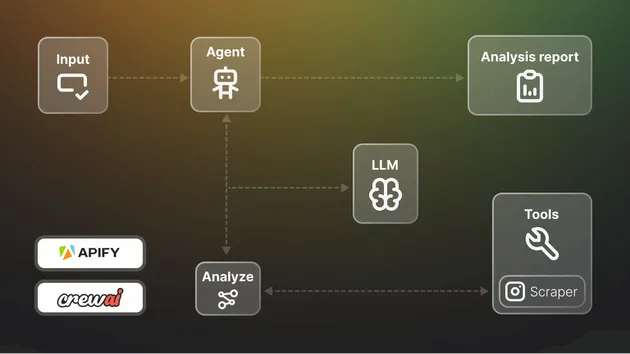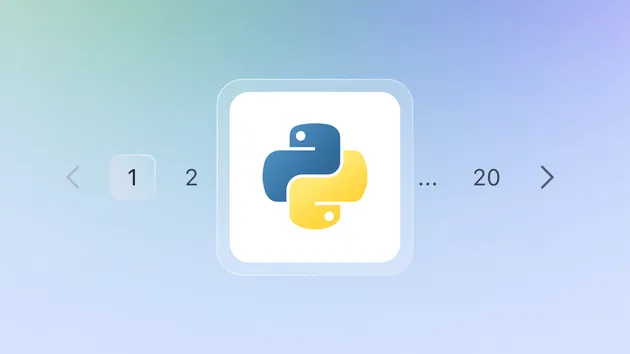My Actor 1
Under maintenance
Pricing
Pay per event
Go to Store
My Actor 1
Under maintenance
4.0 (1)
Pricing
Pay per event
2
Total users
1
Monthly users
1
Runs succeeded
>99%
Last modified
4 months ago
.actor/Dockerfile
# Specify the base Docker image. You can read more about# the available images at https://docs.apify.com/sdk/js/docs/guides/docker-images# You can also use any other image from Docker Hub.FROM apify/actor-node:20 AS builder
# Copy just package.json and package-lock.json# to speed up the build using Docker layer cache.COPY package*.json ./
# Install all dependencies. Don't audit to speed up the installation.RUN npm install --include=dev --audit=false
# Next, copy the source files using the user set# in the base image.COPY . ./
# Install all dependencies and build the project.# Don't audit to speed up the installation.RUN npm run build
# Create final imageFROM apify/actor-node:20
# Copy just package.json and package-lock.json# to speed up the build using Docker layer cache.COPY package*.json ./
# Install NPM packages, skip optional and development dependencies to# keep the image small. Avoid logging too much and print the dependency# tree for debuggingRUN npm --quiet set progress=false \ && npm install --omit=dev --omit=optional \ && echo "Installed NPM packages:" \ && (npm list --omit=dev --all || true) \ && echo "Node.js version:" \ && node --version \ && echo "NPM version:" \ && npm --version \ && rm -r ~/.npm
# Copy built JS files from builder imageCOPY /usr/src/app/dist ./dist
# Next, copy the remaining files and directories with the source code.# Since we do this after NPM install, quick build will be really fast# for most source file changes.COPY . ./
# Run the image.CMD npm run start:prod --silent.actor/actor.json
{ "actorSpecification": 1, "name": "my-actor-1", "title": "Scrape single page in TypeScript", "description": "Scrape data from single page with provided URL.", "version": "0.0", "meta": { "templateId": "ts-start" }, "input": "./input_schema.json", "dockerfile": "./Dockerfile"}.actor/input_schema.json
{ "title": "Scrape data from a web page", "type": "object", "schemaVersion": 1, "properties": { "url": { "title": "URL of the page", "type": "string", "description": "The URL of website you want to get the data from.", "editor": "textfield", "prefill": "https://www.apify.com" } }, "required": ["url"]}.dockerignore
# configurations.idea
# crawlee and apify storage foldersapify_storagecrawlee_storagestorage
# installed filesnode_modules
# git folder.git
# dist folderdist.gitignore
storageapify_storagecrawlee_storagenode_modulesdisttsconfig.tsbuildinfostorage/*!storage/key_value_storesstorage/key_value_stores/*!storage/key_value_stores/defaultstorage/key_value_stores/default/*!storage/key_value_stores/default/INPUT.jsonpackage.json
{ "name": "ts-start", "version": "0.0.1", "type": "module", "description": "This is an example of an Apify actor.", "engines": { "node": ">=18.0.0" }, "dependencies": { "apify": "^3.1.10", "axios": "^1.5.0", "cheerio": "^1.0.0-rc.12" }, "devDependencies": { "@apify/tsconfig": "^0.1.0", "tsx": "^4.6.2", "typescript": "^5.3.3" }, "scripts": { "start": "npm run start:dev", "start:prod": "node dist/main.js", "start:dev": "tsx src/main.ts", "build": "tsc", "test": "echo \"Error: oops, the actor has no tests yet, sad!\" && exit 1" }, "author": "It's not you it's me", "license": "ISC"}src/main.ts
1// Axios - Promise based HTTP client for the browser and node.js (Read more at https://axios-http.com/docs/intro).2import axios from 'axios';3// Cheerio - The fast, flexible & elegant library for parsing and manipulating HTML and XML (Read more at https://cheerio.js.org/).4import * as cheerio from 'cheerio';5// Apify SDK - toolkit for building Apify Actors (Read more at https://docs.apify.com/sdk/js/).6import { Actor } from 'apify';7
8// this is ESM project, and as such, it requires you to specify extensions in your relative imports9// read more about this here: https://nodejs.org/docs/latest-v18.x/api/esm.html#mandatory-file-extensions10// note that we need to use `.js` even when inside TS files11// import { router } from './routes.js';12
13// The init() call configures the Actor for its environment. It's recommended to start every Actor with an init().14await Actor.init();15
16interface Input {17 url: string;18}19// Structure of input is defined in input_schema.json20const input = await Actor.getInput<Input>();21if (!input) throw new Error("Input is missing!");22const { url } = input;23
24// Fetch the HTML content of the page.25const response = await axios.get(url);26
27// Parse the downloaded HTML with Cheerio to enable data extraction.28const $ = cheerio.load(response.data);29
30// Extract all headings from the page (tag name and text).31const headings: { level: string, text: string }[] = [];32$("h1, h2, h3, h4, h5, h6").each((_i, element) => {33 const headingObject = {34 level: $(element).prop("tagName").toLowerCase(),35 text: $(element).text(),36 };37 console.log("Extracted heading", headingObject);38 headings.push(headingObject);39});40
41// Save headings to Dataset - a table-like storage.42await Actor.pushData(headings);43
44// Gracefully exit the Actor process. It's recommended to quit all Actors with an exit().45await Actor.exit();tsconfig.json
{ "extends": "@apify/tsconfig", "compilerOptions": { "module": "NodeNext", "moduleResolution": "NodeNext", "target": "ES2022", "outDir": "dist", "noUnusedLocals": false, "skipLibCheck": true, "lib": ["DOM"] }, "include": [ "./src/**/*" ]}


